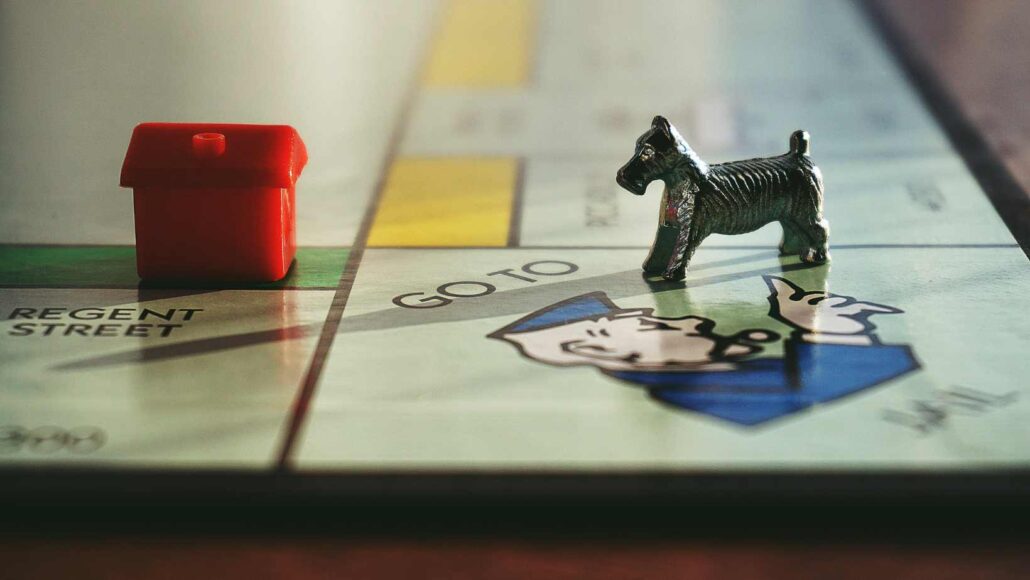Brandon and I were recently talking about how we grew up playing Monopoly. We were remembering how great it felt to collect $200 every time we passed Go. Or how it felt to have a competitor land on one of your properties that had a lot of hotels on it. You got to collect a bunch of money without even trying! The game not only taught us that we could make money passively – it taught us to like it.
The idea of “passive” income has gained popularity in particular with younger generations who aren’t where their parents were at their age and want to catch up. The passive income hashtag has taken off on social media, with influencers touting that they earn thousands of dollars a month through rental properties, offering online courses, owning vending machines, and more. Their stories seem too good to be true – and that’s because they are.
Perhaps millennials and Gen Z-ers have been primed to want easy ways to make money inspired by games like Monopoly and stoked further by almost a lifetime of economic instability, and a shift in values. It’s understandable, given that many in our respective generations aren’t able to afford a mortgage and have student loan debt, but also prioritize a work-life balance. Whatever the draw, the thing to remember is that income is never passive. It always takes some amount of work. The good news is that you can make passive income – you just need to know what it really entails.
What passive income is – and isn’t
The Internal Revenue Service defines passive income as, “Passive activities include trade or business activities in which you don’t materially participate.” Meaning that you don’t participate in the operations that bring in the income in a consistent way.
What people think this looks like is setting up an online store or e-course and letting the orders roll in. But in that scenario, you need to invest money upfront in setting up the store, products, web hosting, website design, marketing, fulfilling orders, dealing with vendors and so on. This also goes for real estate. You’d need to invest in the property, possibly renovate and furnish, find tenants, fix things that break, and potentially hire a management company to help you. Definitely not what I would call passive! The truth is that passive income only happens after a lot of hard work.
My other issue with the idea of passive income is that people are focused on the cash flow (the money that’s coming in) that the investment may generate but don’t look at the returns on the investment. This is a critical distinction. The amount of cash flow that a rental property may generate is a part of the investment return, but it is not the whole piece of the return. Let’s say you buy a rental property for $500,000 and it generates $15,000 a year of net rental income. $15,000 a year sounds like a nice amount of cash to have in your pocket, but that only amounts to a 3% rate of return on a $500,000 investment. Then something happens and the roof needs to be replaced or the house has to be repainted. Suddenly your $15,000 a year goes out the door. Putting $500,000 in a savings account right now would yield you more than $20,000 a year – and you can do that without leaving the comfort of your own home!
The right approach to generating passive income
The only income that is truly “passive” is an investment that generates income, interest or dividends without you having to lift a finger. For most people, that means a portfolio of financial assets (stocks, bonds, CDs). But it could also look like a large company you inherit that is being run by a management team and a board of directors. Or it could be a rental property that you have owned for years and is now running smoothly. Whatever it looks like, you need to remember a few things.

It takes time.
Most of us will be successful in earning passive income from long-term investing. Ideally, with each year that you save, invest, and add to your investment portfolio (be it a brokerage account, savings account, or in buying a rental property), your passive income will grow. This allows the interest to compound over time, making the money for you. We advise our clients that passive income is something to build toward over time so they can supplement or replace income that they may need.
You still have to work.
Passive income does not mean total inaction. Even though the term implies limited involvement, it’s important to recognize that your efforts is still necessary. That could look like periodically reviewing your investment portfolio to ensure you’re staying on with your financial goals and market conditions. For rental properties, it might involve handling your tenants, overseeing maintenance, and making sure property management is doing what they’re supposed to. While it’s true that you don’t do as much as you would with an active income like a job, you still need to take a proactive role in growing and protecting your passive income streams.
It takes thought and intention.
If you’re going to delve into building income-generating assets, like a rental property, you need a well-informed perspective. Making your assets into passive income generators is going to take effort and time to pay off. Go into it with your eyes wide open.
Whatever you’ve heard about passive income, it’s important to demystify its allure and understand what it really means. To successfully generate passive income, you need to balance patience, thoughtfulness, and intention. When you focus on building wealth for the long term, and are willing to put some effort into it along the way, the result can feel like you aren’t even trying.

Jim is a financial advisor and owner of Thinking Big Financial, Inc. Thinking Big Financial is a fee-only registered investment advisor offering financial planning and investment management services. Specializing in working with the LGBTQ Community.
Please read my legal disclaimer here.

